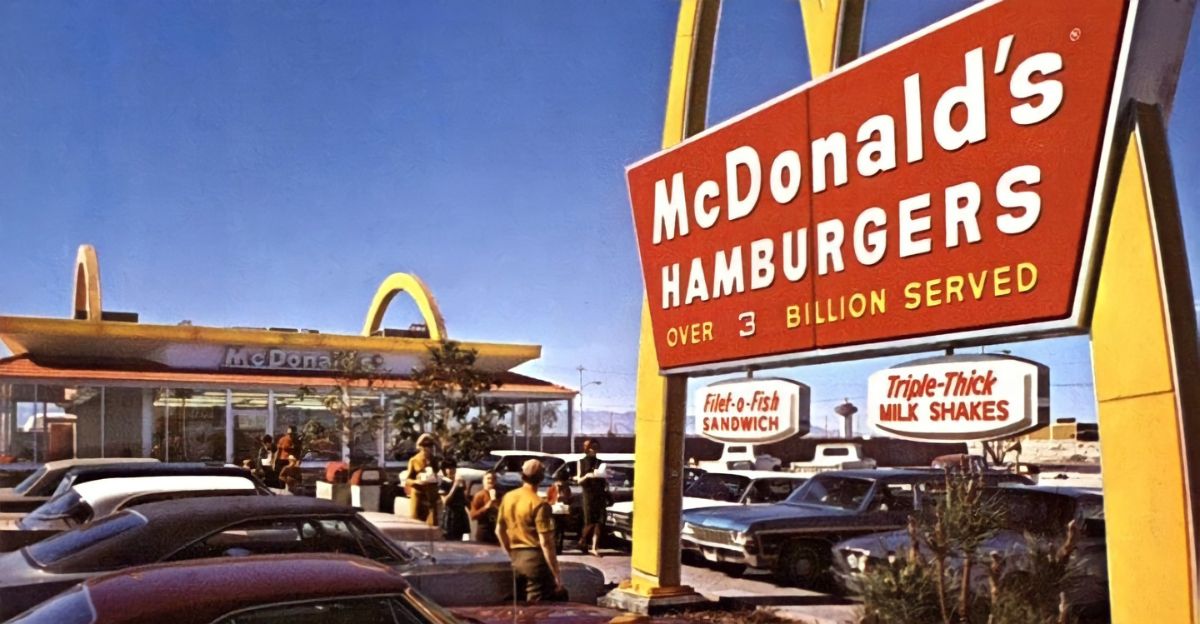
Have you wondered what McDonald’s looked like in the early years? Beneath the cheerful golden arches of 1970s McDonald’s lies a complex, often disturbing history that forces us to challenge nostalgic assumptions. Vintage photos of contented families enjoying 39-cent burgers exist, but within them is a deeper narrative of racial division, worker exploitation, and corporate image management.
For example, the 1973 Hickory Hills opening photo with executives standing alongside cleaning gear was a sanitized corporate image masking ugly realities behind the counter. These images don’t just spark nostalgia; they show how McDonald’s plays a fundamental role in growing inequality in America. Behind the smiles and fries, the company quietly builds a system full of social contradictions, all wrapped in the comfort of fast food
1. Civil Rights and Business Decisions Clash
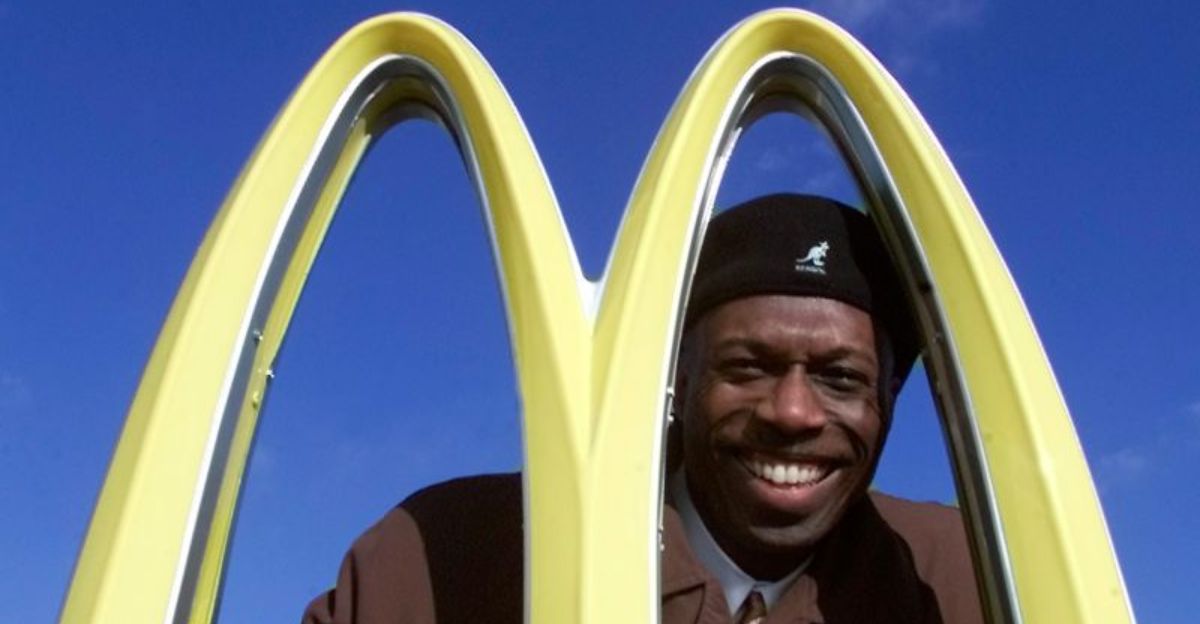
Following the 1968 civil rights uprisings, McDonald’s began to recruit Black franchisees—not out of generosity but strategic necessity.
Photos of early Black-owned McDonald’s in inner cities depict a Faustian bargain: economic development for these neighborhoods came at the cost of addiction to unhealthy food systems. By 1975, nearly half of McDonald’s locations were Black-owned franchises in Chicago’s food deserts.
Communities deprived of public investment, the business model exploited systemic racial neglect, rendering fast food an area of business opportunity and a public health crisis. The images shatter the myth of equal opportunity, describing how profit-making continually hijacked civil rights achievements.
2. Architecture as Suburban Propaganda
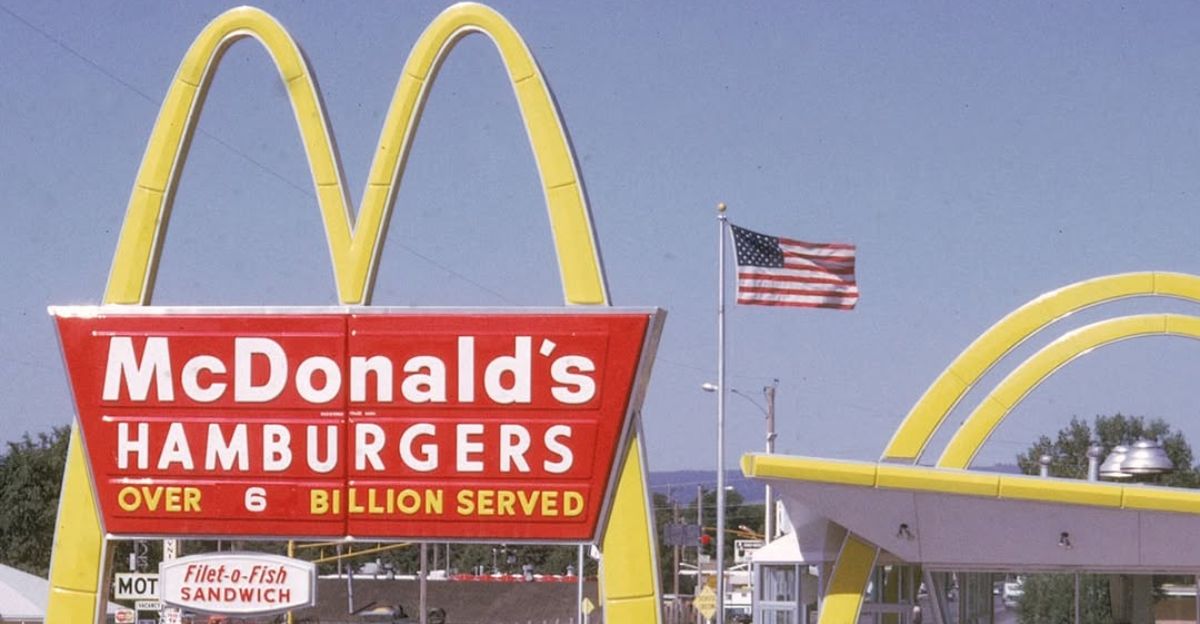
The remodeling of McDonald’s restaurants in the 1970s into mansard roofs and split-level facades was aesthetic and a form of suburban propaganda. The structures mimicked the white middle-class dream home and visually reinforced suburban exclusionary values.
Redlining policies actively excluded minorities from those communities. Gaslit communities design their architecture to project a sense of belonging that they deny to many. Photos from the era show how McDonald’s physical spaces came to represent racial and economic segregation, writing division into the very geography of consumer culture. This unspoken visual message defined the understanding of who belonged in America’s “good” neighborhoods.
3. Fighting Unions While Serving Customers
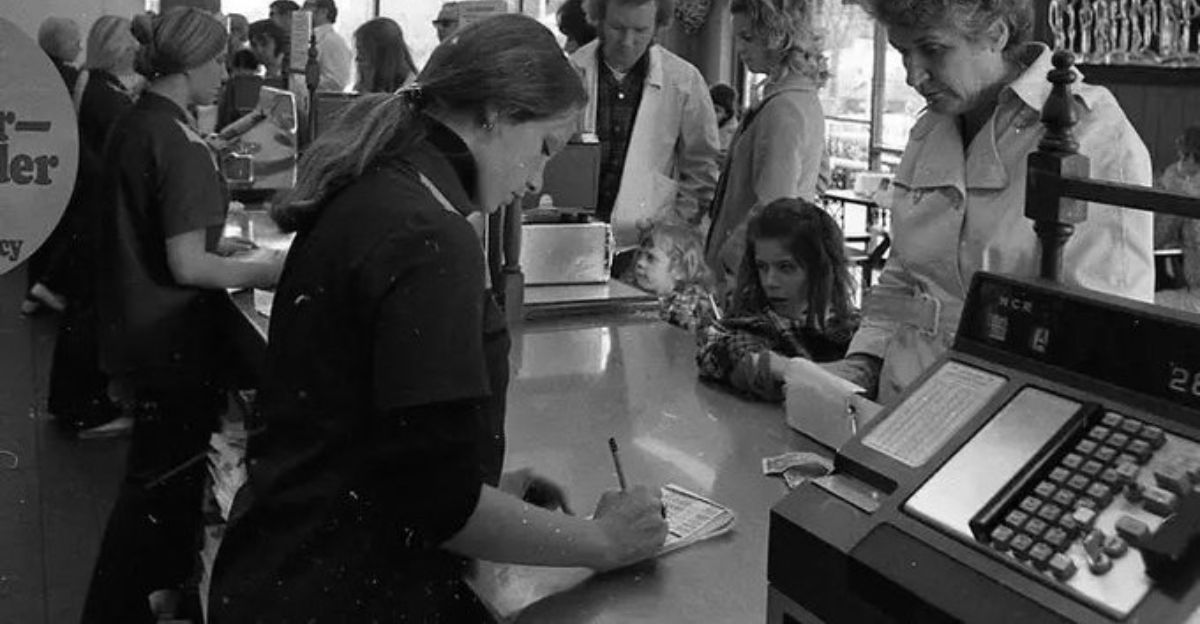
Behind the smiling faces in the 1970s McDonald’s kitchen photos is a grim reality of labor exploitation. During the decade, the corporation actively broke up over 400 unionization attempts nationwide.
Images of teenagers working cash registers at $1.60 an hour (about $9.15 in today’s money) hide the fact that many were anti-union trained and threatened. McDonald’s uses its “family restaurant” image to hide widespread wage suppression and labor rights violations. These photographs show how the company turns young workers into tools of corporate power while promoting a polished, community-friendly brand.
4. Buildings That Tell a Marketing Story
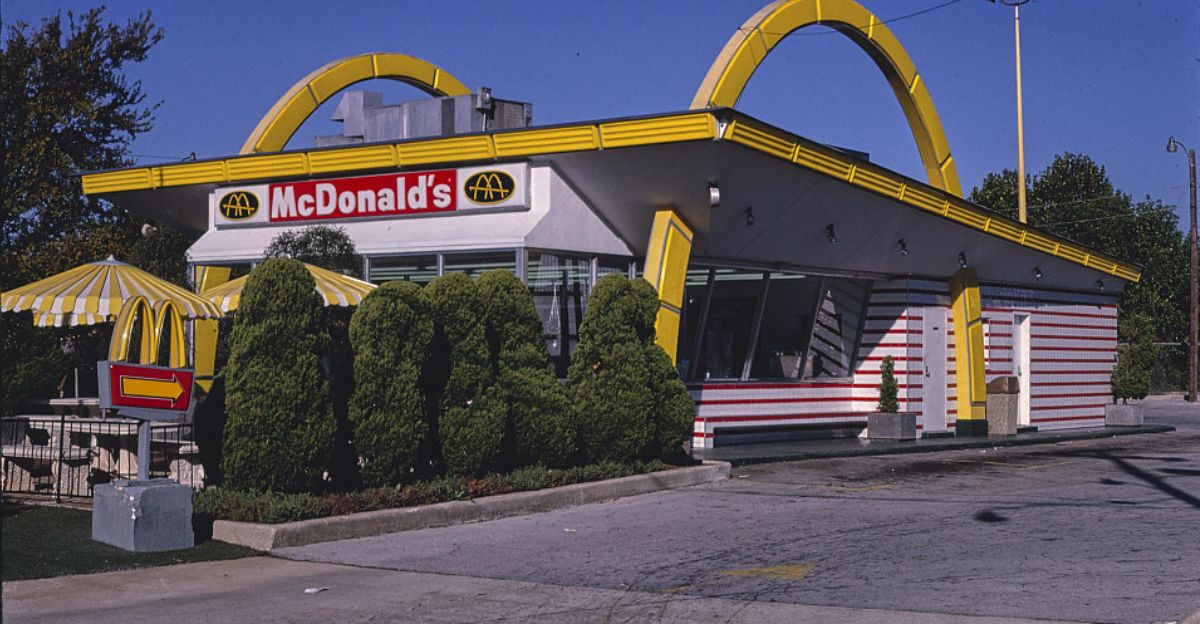
The remodeling of McDonald’s restaurants in the 1970s into mansard roofs and split-level facades was aesthetic and a form of suburban propaganda. The structures mimicked the white middle-class dream home and visually reinforced suburban exclusionary values.
Redlining policies actively excluded minorities from those communities. Gaslit communities design their architecture to project a sense of belonging that they deny to many. Photos from the era show how McDonald’s physical spaces came to represent racial and economic segregation, writing division into the very geography of consumer culture. This unspoken visual message defined the understanding of who belonged in America’s “good” neighborhoods.
5. How Fast Food Chains Try to Block Unions
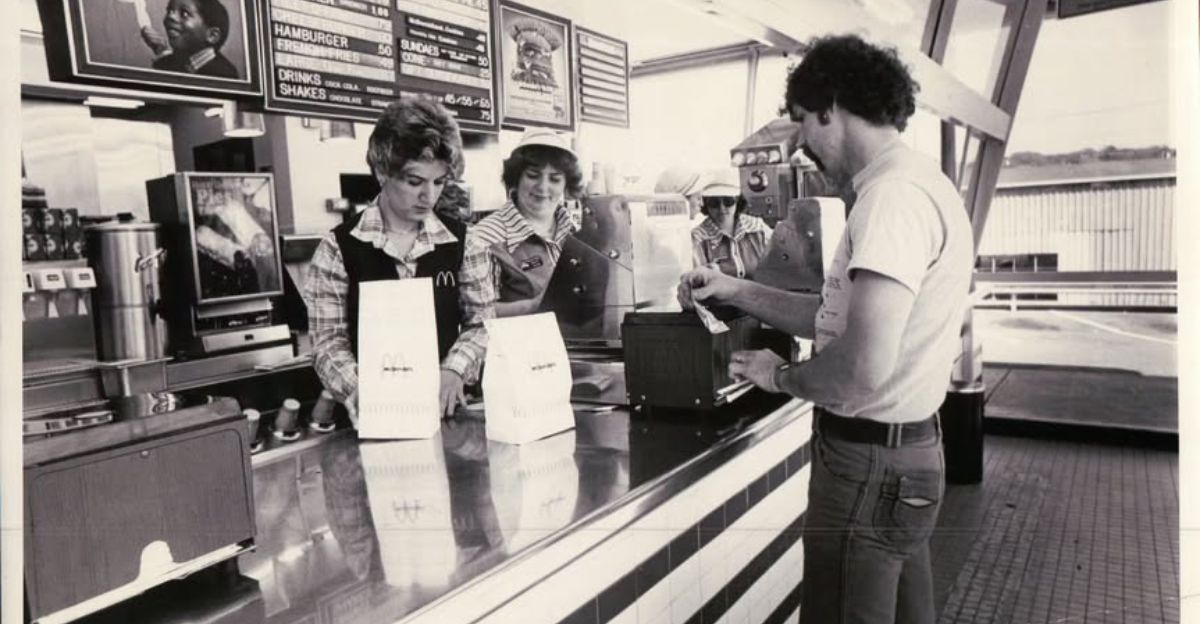
Behind the smiling faces in the 1970s McDonald’s kitchen photos is a grim reality of labor exploitation. During the decade, the corporation actively broke up over 400 unionization attempts nationwide.
Images of teenagers working cash registers at $1.60 an hour (about $9.15 in today’s money) hide the fact that many were anti-union trained and threatened. The “family restaurant” image was a smoke screen for rampant wage suppression and labor rights violations. These photographs illustrate how McDonald’s commodified young labor, rendering it a vehicle for corporate power while fostering a clean, community-minded brand identity.
6. How Fast Food Play Areas Influence Families and Kids
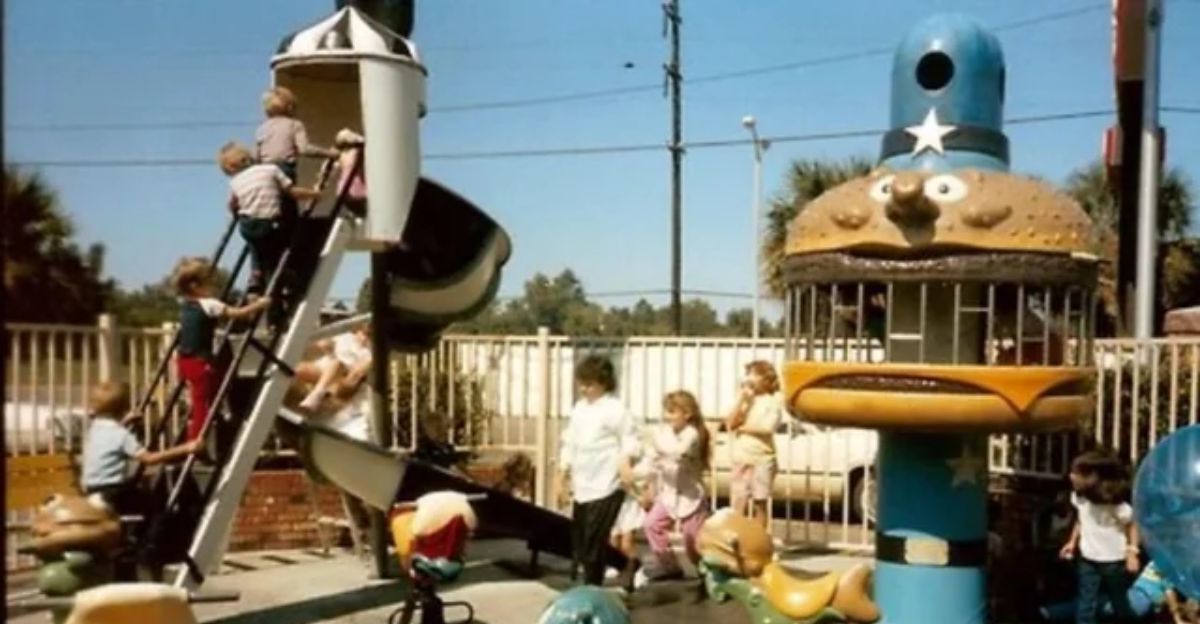
The initial McDonald’s PlayPlaces in 1971 were an early conditioning behavior. Photos of children playing in red tubes and ball pits capture how the corporation linked socialization and enjoyment to consumption.
This initial environmental design reprogrammed children’s minds to associate fast food with joy. Presently, neuroscience confirms that such stimuli unlock dopamine, creating brand loyalty at an early stage.
PlayPlaces weren’t playgrounds—social engineering tools structuring consumer conduct and emotional response, a strategy later adopted by the computer industry to receive notice and structure consumption habits for a lifetime.
7. The Truth Behind Black Ownership in Big Business
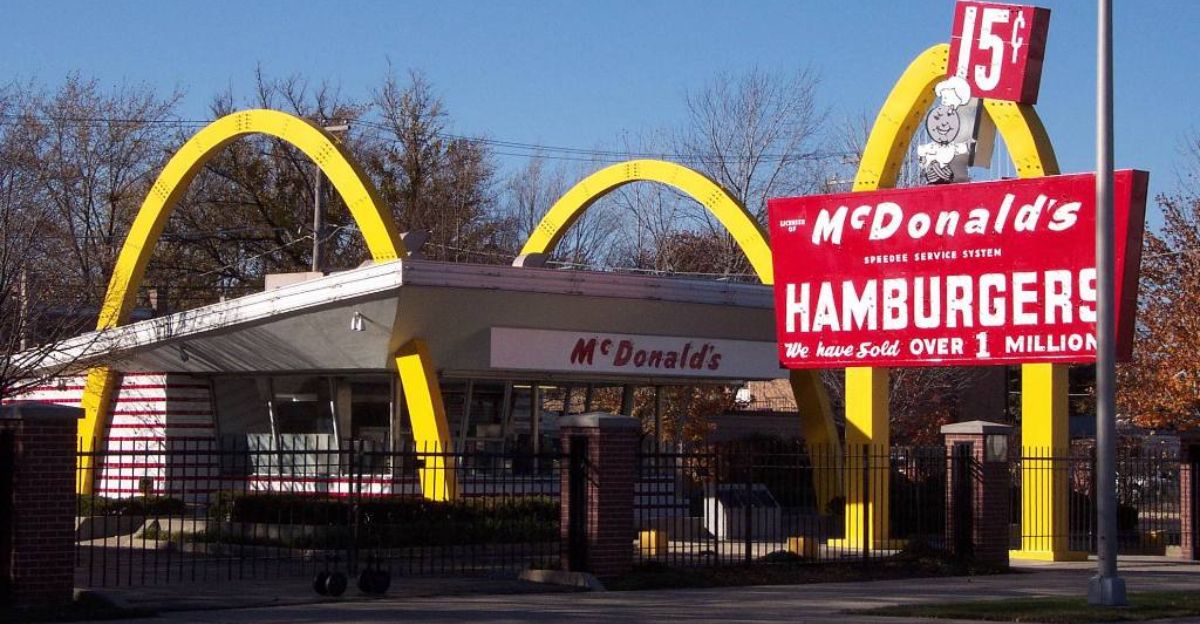
Photographs of Black franchisee conventions during the 1970s depict an intentionally constructed narrative of Black economic empowerment. Off-screen, however, structural barriers persisted: Black franchisees were required to satisfy loan conditions for 70% collateral compared to 30% for their white counterparts.
Through 1979, Black-owned retail establishments earned 22% less, on average, due to redlined stores in economically downtrodden areas. These images expose the limitations of “Black capitalism” at McDonald’s—a system present but structurally racist. The photographic record contradicts the rose-colored success stories, revealing a dirty race, economy, and corporate decision-making dynamic.
8. How Highway Projects Hurt Minority Neighborhoods
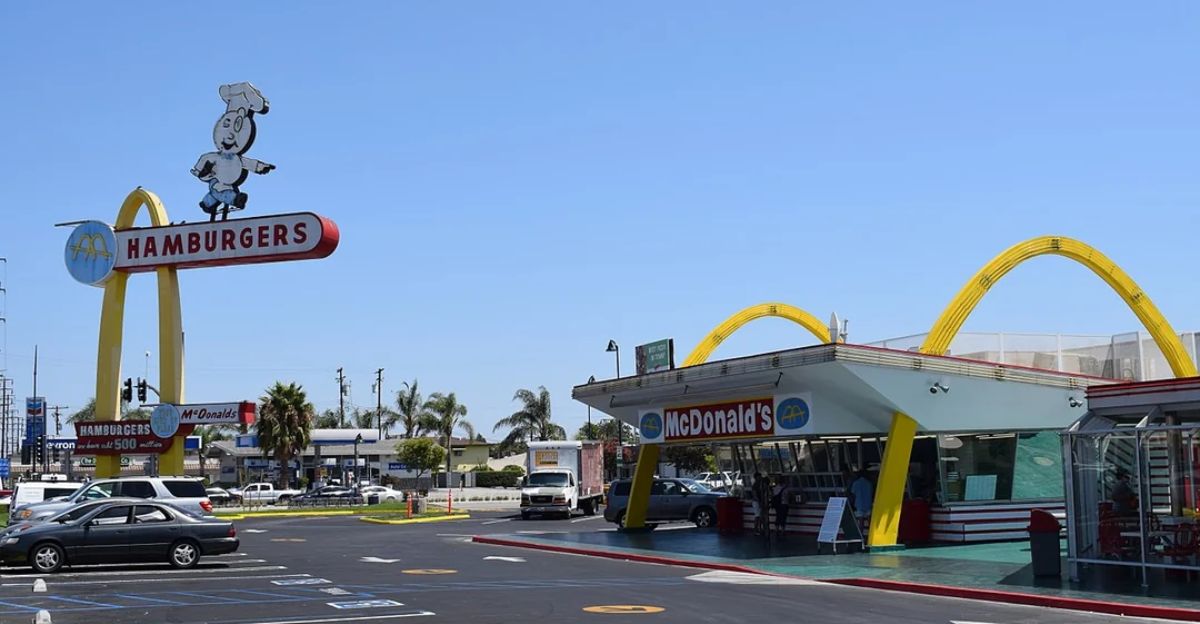
Drive-through photos shot in the 1970s provide greater insight into infrastructure with origins in racial discrimination. Approximately 85% of new McDonald’s places its franchises along highways built through minority neighborhoods
McDonald’s built many of its locations in areas where new highways tore through Black and Latino neighborhoods, forcing families out of their homes and breaking up close-knit communities. The company grew by taking advantage of government-funded road projects that caused this harm, placing its restaurants where people had just been pushed out.
These images serve as a jarring reminder of how corporate expansion became tied up with governmental policy in a bid to increase racial and economic disparity under the guise of progress and convenience.
9. Nuggets of Truth within a Happy Meal Lie

The 1970s McDonald’s photographs reveal that the brand was not simply a disengaged spectator but an engaged participant in America’s economic and social inequalities.
McDonald’s hides its history of keeping wages down behind retro Happy Meals and family restaurant dinners, racial terror, and cultural exploitation. But acknowledging that history gives us a blueprint for reclaiming narratives and holding those in power accountable. These images compel us to look beyond the golden arches and ask how corporations.
Discover more trending stories and Follow us to keep inspiration flowing to your feed!

Craving more home and lifestyle inspiration? Hit Follow to keep the creativity flowing, and let us know your thoughts in the comments below!
